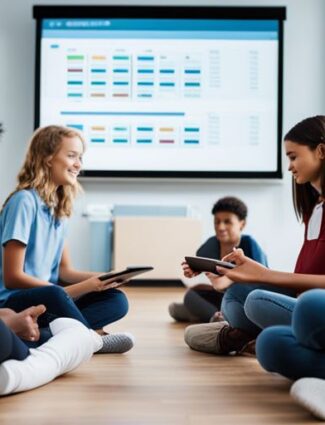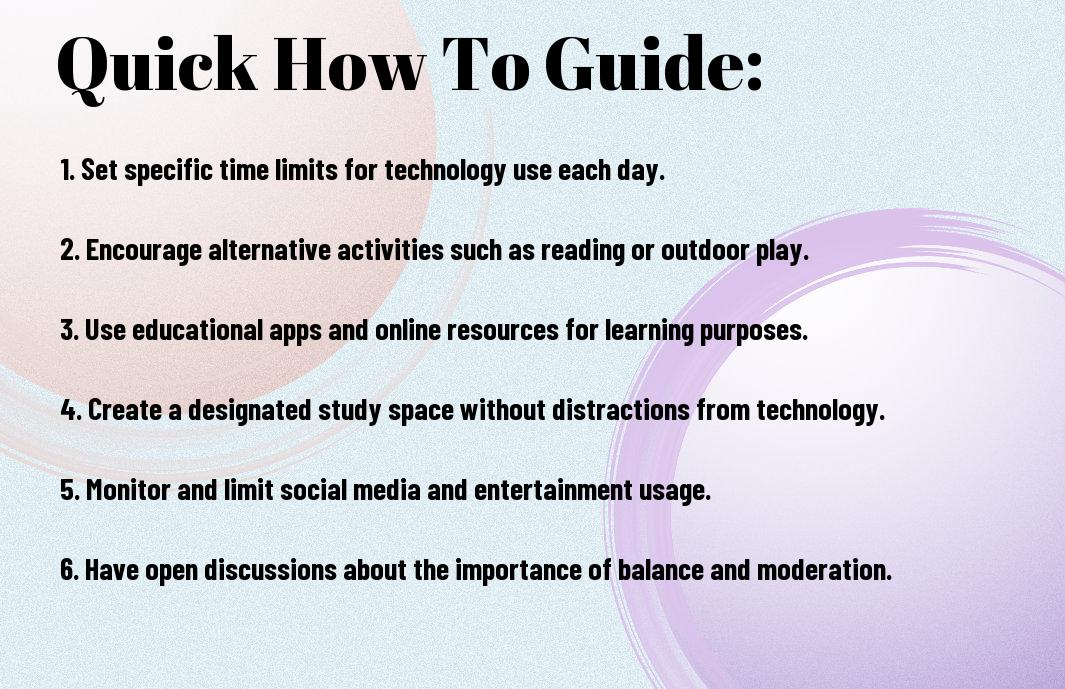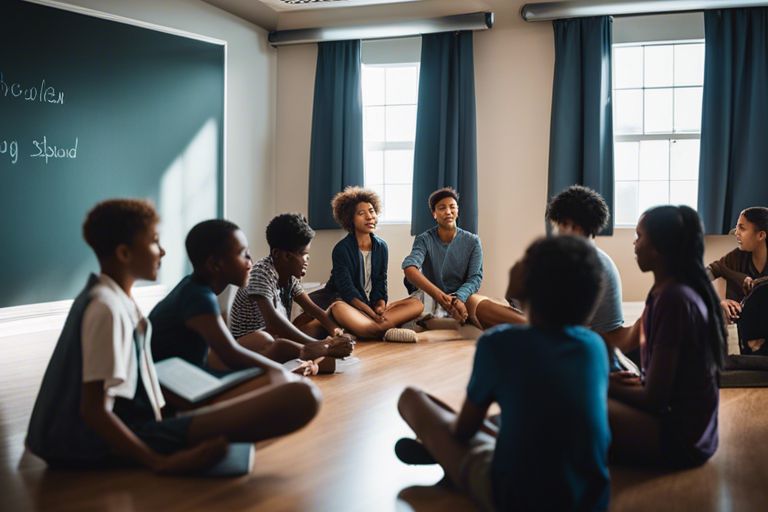How to Balance Technology Use and Learning in Middle School

In the modern world, the ubiquity of technology can often lead to a disconnect between learning and screen time. As a middle school student, it’s important to find a healthy balance between the two in order to ensure you are maximizing your educational experience. With the right strategies and mindset, you can effectively integrate technology into your learning while still prioritizing academic growth.
One of the most critical aspects of balancing technology use and learning in middle school is setting boundaries for yourself. This means establishing designated times for technology use for recreational purposes, while also ensuring that you have ample time for focused, uninterrupted learning. Additionally, it’s crucial to be mindful of the type of technology you are using for learning – not all platforms and devices are created equal, and selecting the right tools can make a significant difference in your academic success. By taking proactive steps to manage your technology use, you can create an environment that fosters both learning and digital engagement in a healthy and balanced manner.
Key Takeaways:
- Establish clear guidelines: Setting clear rules and expectations for technology use in the classroom can help students to maintain focus on learning.
- Encourage responsible use: Teaching students about the appropriate use of technology and digital citizenship can help them to navigate their online activities in a safe and productive manner.
- Provide a balanced approach: Offering a mix of technology-based and traditional learning activities can help to create a well-rounded educational experience for middle school students.
- Model positive tech behaviors: Educators should demonstrate responsible and mindful use of technology to set a positive example for their students.
- Regularly assess tech integration: Periodically evaluating how technology is being used in the classroom can help to ensure that it is effectively supporting student learning and engagement.

Evaluating Current Technology Use
Obviously, technology plays a crucial role in the lives of middle school students today. It’s important for you to evaluate your current technology use in order to strike a balance between staying connected and focused on learning. This assessment will help you identify areas of improvement and make necessary changes to create a healthy technology and learning environment.
Assessing Screen Time and Usage Patterns
When evaluating your technology use, it’s important to assess your screen time and usage patterns. Look at how much time you spend on your devices each day and the activities you engage in. Are you spending too much time on social media, gaming, or other non-educational activities? Consider keeping a log of your screen time for a week to gain a better understanding of your usage patterns. This will help you identify any excessive or harmful technology habits that need to be addressed.
Identifying Educational vs. Distractive Technology Use
Another aspect to consider when evaluating your technology use is distinguishing between educational and distractive use. Are you using technology to enhance your learning, research, and educational activities, or is it mostly serving as a distraction from your studies? Be honest with yourself about how you utilize technology and whether it aligns with your educational goals. It’s crucial to identify any distractive use and make changes to prioritize educational technology use.
By assessing these key factors, you can gain a clear understanding of your current technology use and make informed decisions to strike a healthy balance that supports your learning and overall well-being.

Factors to Consider for Balanced Technology Use
Your middle schooler’s technology use should be approached with careful consideration to ensure a balanced approach to their education and well-being. Here are some important factors to consider:
- Age appropriateness and developmental needs
- The role of technology in the middle school curriculum
- Setting boundaries and clear guidelines
- Monitoring and limiting screen time
Any decision about technology use should take into account your child’s developmental stage, their school curriculum, and the need for clear boundaries and monitoring.
Age Appropriateness and Developmental Needs
When considering technology use, it’s important to take into account your child’s developmental needs and their age-appropriate level of screen time. Middle schoolers are at a stage where they are developing their critical thinking skills, curiosity, and independence. Excessive screen time can impact their social, emotional, and cognitive development.
It’s crucial to strike a balance between technology use and other activities that promote physical activity, social interaction, and creative play in order to support your child’s overall development.
The Role of Technology in the Middle School Curriculum
Technology plays an important role in the middle school curriculum, offering opportunities for interactive learning, research, and collaboration. It can enhance students’ engagement and motivation, and provide access to a wealth of resources and information.
However, excessive reliance on technology can lead to decreased attention span, lack of critical thinking, and potential social and emotional challenges. It’s essential to monitor and moderate your child’s technology use to ensure a balanced approach to their education.
Strategies for Integrating Technology in Learning
To ensure a balanced use of technology in middle school learning, it is important to integrate technology in a way that enhances engagement and allows for effective learning. There are several strategies that you can use to achieve this balance, and the following subsections will discuss some of these strategies in detail.
Enhancing Engagement Through Interactive Tools
Interactive tools can significantly enhance engagement in the learning process. By incorporating tools such as educational games, simulations, and virtual reality experiences into your lessons, you can create a more immersive and interactive learning environment. These tools can make learning more enjoyable and meaningful for students, and can help them retain information more effectively. Additionally, interactive tools can cater to different learning styles, allowing for a more personalized learning experience for each student.
Leveraging Educational Apps and Platforms
Educational apps and platforms offer a wealth of resources and opportunities for learning. By leveraging these tools, you can provide students with access to a wide range of educational content, tailored to their specific learning needs and interests. These apps and platforms can also enable you to track students’ progress and provide personalized feedback, allowing for a more individualized approach to learning. Furthermore, educational apps and platforms can encourage independent learning and self-directed exploration, allowing students to take ownership of their learning.
Tips for Managing Distractions and Maintaining Focus
Keep distractions at bay by establishing a dedicated study area where you can focus on your schoolwork without being interrupted. This could be a quiet corner of your room or a specific area in the house where you feel most productive. Make sure this area is free from electronic gadgets and other potential distractions.
- Turn off notifications on your devices to prevent interruptions while studying.
- Consider using website blockers or apps to limit access to social media and other time-wasting websites during study sessions.
- Take regular breaks to refresh your mind and prevent burnout.
- Use tools like noise-cancelling headphones to block out background noise and help you concentrate.
The key is to create an environment that minimizes distractions and allows you to maintain focus on your learning tasks.
Setting Up a Conducive Learning Environment
Creating a conducive learning environment is essential for optimizing your study and learning experience. Find a space with good lighting, comfortable seating, and minimal distractions. Make sure your study area is organized and free from clutter, allowing you to focus on your assignments and projects without unnecessary distractions.
Establishing Rules and Expectations for Technology Use
When it comes to technology use, it’s important to set clear rules and expectations to ensure that it complements your learning rather than hinders it. Discuss with your parents or guardians about the appropriate use of devices during study time and establish guidelines that help you stay on track with academic responsibilities. It’s essential to find a balance that allows you to benefit from technology while also staying focused on your schoolwork.
Encouraging Responsible Digital Citizenship
Now that you understand the importance of balancing technology use and learning in middle school, it’s crucial to encourage responsible digital citizenship. This entails educating students on online safety, privacy, and positive online behavior.
Teaching Online Safety and Privacy
When it comes to teaching online safety and privacy, it’s important to emphasize the potential dangers of sharing personal information online. You should educate students about the risks of interacting with strangers, the importance of safeguarding their personal information, and the potential consequences of cyberbullying. Encourage them to think critically about the information they share and to be cautious of the websites they visit. It’s also important to teach students how to create strong, unique passwords and the importance of regularly updating them to keep their accounts secure.
Promoting Positive Online Behavior and Etiquette
Promoting positive online behavior and etiquette is essential for creating a respectful and inclusive online environment. You should emphasize the importance of empathy and respect when interacting with others online. Teach students to think before they post or comment, as their digital footprint can have long-lasting consequences. Encourage them to use social media and other online platforms as a force for good, promoting positivity, and using their digital platforms to advocate for causes that are important to them. By promoting a culture of kindness and respect online, you can help create a safer and more pleasant digital space for everyone.
Involving Parents and Guardians
After laying the foundation for a balanced approach to technology use and learning in middle school, it’s essential to involve parents and guardians in the conversation. Your role as a parent or guardian is crucial in shaping your child’s technology use and learning habits. By staying informed and involved, you can help ensure that technology is used in a positive and productive way.
How to Communicate about Technology Use at Home
When it comes to discussing technology use with your child, it’s important to set clear expectations and boundaries. Start by having open and honest conversations about how technology fits into your family’s values and priorities. Encourage your child to share their thoughts and concerns about technology, and listen attentively to their perspective. By creating a safe and non-judgmental space for these conversations, you can better understand your child’s relationship with technology and provide guidance accordingly. Additionally, be proactive in setting guidelines for screen time, device usage, and online behavior to promote a healthy balance between technology and other activities.
Tools for Parental Oversight and Collaboration
As a parent or guardian, there are numerous tools and resources available to help you oversee and collaborate on your child’s technology use. Consider utilizing parental control software to monitor and manage your child’s screen time, app usage, and online activity. These tools can provide insights into your child’s digital behavior and help you address any issues that may arise. Furthermore, establish open lines of communication with your child’s teachers and school administrators to stay informed about the technology used in the classroom and collaborate on fostering a positive learning environment. By working together with educators, you can ensure that technology is integrated into your child’s education in a responsible and beneficial manner.
Monitoring and Adapting the Balance
Unlike with younger children, monitoring and adapting the balance of technology use and learning in middle school takes on an added layer of complexity. Your middle schoolers are likely becoming more independent and taking on more responsibility for managing their own technology use, making it important for you to stay attuned to their habits and needs. It’s crucial to maintain an ongoing assessment of the impact of technology on their learning, as well as to adjust strategies as your students mature and technology evolves.
Ongoing Assessment of Technology’s Impact on Learning
As your middle schoolers engage more deeply with technology, it’s important to regularly assess how it’s affecting their learning. You can use a variety of methods to do this, such as observing your students’ engagement and performance in the classroom, monitoring their use of technology at home, and gathering feedback from both students and parents. Pay attention to any signs of distraction, lack of focus, or decline in academic performance, as these can be indicators that technology is interfering with their learning. Be particularly vigilant of excessive social media use and the presence of cyberbullying, both of which can have a detrimental impact on your students’ well-being and learning.
Adjusting Strategies as Students Mature and Technology Evolves
As your students grow and develop, their relationship with technology will naturally evolve. It’s important for you to adapt your strategies to meet their changing needs. Encourage open communication with your students about their technology use and the challenges they may be facing. Provide them with guidance on how to use technology in a balanced and productive way. Keep pace with the latest technological trends and developments, and consider incorporating new tools and platforms into your teaching to better engage your students. Additionally, be prepared to adjust your approach as technology continues to evolve, ensuring that your methods are always aligned with the best practices for supporting your students’ learning.
Conclusion
Ultimately, finding the right balance between technology use and learning in middle school is crucial for your academic and personal development. It’s important to recognize the benefits of technology in education, but also be mindful of its potential drawbacks. By setting limits on screen time, engaging in hands-on activities, and using technology as a tool rather than a distraction, you can create a healthy balance that promotes both learning and personal growth.
Remember that technology is a tool to enhance your learning experience, not a replacement for traditional methods. By being proactive about managing your tech use and staying engaged in your education, you can create a balanced and successful middle school experience. Striking this balance will not only help you academically, but also foster important skills such as critical thinking, digital literacy, and time management.
FAQ
Q: How can technology use be balanced with learning in middle school?
A: Middle school students can benefit from technology use as long as it is monitored and balanced with other learning activities. It is important for parents and educators to set limits on screen time and encourage a balance of technology use with other learning methods such as reading, hands-on activities, and face-to-face interaction.
Q: What are the risks of excessive technology use in middle school?
A: Excessive technology use in middle school can lead to decreased attention span, reduced physical activity, and negative impacts on social and emotional development. It is important for parents and educators to be aware of these risks and to encourage a healthy balance of technology use with other activities.
Q: How can parents and educators support balanced technology use in middle school?
A: Parents and educators can support balanced technology use by setting clear guidelines and expectations for screen time, providing alternative activities to technology, and modeling healthy technology habits themselves. It is important to have open communication with students about the benefits and risks of technology use, and to emphasize the importance of balance in all aspects of life.